Blog

Are you frustrated after failing to reach and teach children with ADHD after trying every teaching technique you can think of? It can be difficult to know how to adapt your teaching style to help children with ADHD to have the best possible learning experience. Thankfully there are several strategies that you can make use of to help all children to have the best possible education. If you're wondering how to get better at teaching children with ADHD, read on and we'll tell you what you need to know. Understanding How Children With ADHD Learn the Best One of the first things to recognize about youth who have ADHD is that they seek novelty. Their attention naturally orients towards high-interest kinds of activities. This is why they thrive in learning situations where the curriculum is engaging and active. In order to offer children this opportunity, consider embracing activities that involve physical movement and motor activity. For example, if you are teaching children with ADHD about reading street signs, you should invite the child to be active in order to practice obeying what the signs say. You should also try to give the child options to choose from. By letting them have options, they have more freedom to be curious. This is important because it gives them chance to lean into their strengths in order to learn and grow. Children with ADHD struggle in situations where they get bored, such as while they're waiting for a teacher to draw out instructions for an activity on the whiteboard. If they need to wait for their turn to complete a task, they'll need more stimulation than other children will. They also have a need to feel competent at what they're doing. This is why you should make a point of rewarding the child you're working with by offering things like badges, prizes, high fives, and opportunities for leadership. Teaching Children With ADHD by Recognizing Their Social Needs and Challenges Make sure that you make a point to help children with ADHD to sense their relationships with others. Since social interaction is usually their most valued kind of stimulation, it is imperative that you offer kind support and individualized attention. Kids with ADHD also like to see the emotional responses from others. This is why it's common for them to be attracted to kids who are known to be troublemakers. Many teachers often don't realize that their angry and aggressive responses to children with ADHD who are causing trouble only serve to reinforce the behavior that the teachers are trying to stop. Instead, it's a better idea to be calm and unemotional when trying to redirect a child who has ADHD. Top Strategies Teaching Strategies for Children Who Have ADHD There are many different strategies for children with ADHD that can support them to have the best possible learning experience. Here are several of the most important things that you can do to help them. Match Their Skill Level You should first make sure that you're assigning schoolwork that matches a students' skill level. The reason for this is that they will usually want to avoid classwork that is too difficult to do or that is too tedious for them. Give Many Options You should also give the children as many options as you can. For example, you could offer them a list of ten activity choices for practicing math equations. You might consider using flashcards, writing on the whiteboard, or on their digital device. Visual Reminders Are Important Another of the great strategies for children with ADHD is to provide visual guidance. If you're going to explain a skill such as telling the time, do this by using an overhead projector or a whiteboard in order to explain the activity's instructions. Present Important Concepts in New Ways You could also start finding engaging ways to display important ideas that you want children to work with. One way to do this is by writing these concepts onto bright posterboard which you hang up around the classroom. Encourage Group Participation When you encourage your class to participate as a group, you help children with ADHD to be more engaged in what they're doing. You can do this by requesting students to write responses to exercises on a dry erase board, having students speak responses to questions in unison, and encouraging your class to raise their hands if they agree with something that you say. Go Out of Your Way to Offer Accommodations for Children With ADHD There are many children who will need special accommodations in order to help them to learn in the best way possible. Some of these accommodations could be more complex. Other types of accommodations are straightforward enough that schools for children with ADHD can easily offer them. This might include things like keeping an eye on a student's work or creating a plan to assure that they don't fall behind in class. You should also try giving students more time on the tests they're taking, offering shorter assignments, and breaking longer assignments into smaller segments. There Are Many Easy Ways to Support Children With ADHD Once you know how to start teaching children with ADHD, it's easy and fun for you to do. Many teachers don't understand the unique needs that children with ADHD have. Once they recognize their unique needs, it's much easier to create situations where all of their students can thrive. It's important to recognize that you're not alone in teaching children with ADHD. This is why we offer various services that are tailored for each person who we work with. If you want to support children with ADHD who you work with in the best possible way, please visit our services page in order to find out how we can help you.
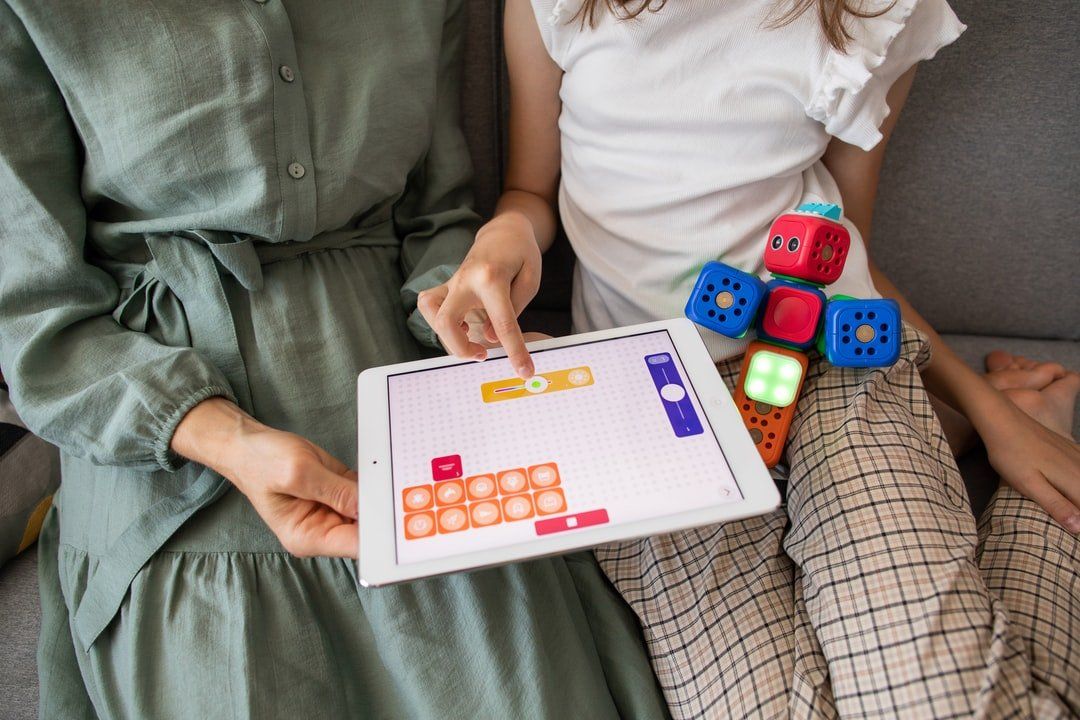
The unique parenting journey of a special needs child is a path that is often difficult to navigate. It's a path that may involve different treatments and interventions. It's not what you expected. You listen to the specialists, read all the books, and learn to understand your special needs child. Yet, you may still second-guess the important role that you play in your child's special needs education. You shouldn't. You are your child's expert and greatest supporter. As the parent, you have the most complete understanding of your child's physical, emotional, and social development. Your family dynamic is unique. This dynamic is the continuity in your child's life. Sharing family information may give insight into what is needed in the classroom environment. Involvement in your child's special needs education will make a positive difference in the overall learning experience. So how do you get involved? Learning the educational options available and choosing the best approach to meet your child's education is a place to start. Special Needs Education Special Education is a broad term that refers to services that can be provided for your child. This approach to instruction should address the specific needs of your child's disability. The public school system in your area will determine access and opportunities for your child. Educational standards are also designated by your public school system. Adaptations for your child's physical or movement needs will be given as deemed necessary. This does not mean that your child will be in a special education or a resource room all day. According to the Individuals with Disabilities Education Act (IDEA), children who receive special education services should be in the least restrictive environment. Your child should be learning in the same classroom as other children. This will be made accessible with the appropriate accommodations. Individualized Education Plan (IEP) The Individualized Education Plan is covered under the Individuals with Disabilities Education Act. Teachers, parents, administrators, and other school personnel work as a team to create an educational program. This program is developed to meet the individual needs of the child. The IEP evaluates a child's current educational performance. This will take a look at the special needs of the child, how those needs affect involvement in the classroom, and learning outcomes. The IEP includes reasonable annual goals for the child broken down into short-term objectives. These benchmarks tackle physical, behavioral, or social needs, as well as academics. Any supplemental services or classroom modifications needed to assist the child will also be listed on the IEP. Parental involvement is required at the annual IEP meeting, which can be intimidating. But remember, you are the most important member of your child's educational team. You know your child best. Take the opportunity to ask questions and give input to customize a learning experience that fits your child. The 504 The 504 plan was established in 1973 and is a section of the U.S. Rehabilitation Act. It provides accommodations for students with physical or mental impairments within a regular classroom setting. When a student is not eligible for special education services or an IEP, a 504 plan will provide the modifications for academic success. Like the IEP, parents are part of the 504 team, and accommodations are reviewed annually. With a 504 , a parent can call for a plan review at any time to evaluate academic concerns or request other appropriate changes. Your involvement in the process will assist in customizing your child's educational experience. This can ensure your child's academic and social success. Parent as Educational Partner There is no one more invested in your child's success than you, the parent. You understand your child's specific requirements to function happily in life. Embrace your role as an educational partner and become a proactive parent. Through interactions and observations of your child, you can share changes or discoveries with the education team. By sharing this information, you offer the educators insight into behaviors that may not be observed in the classroom. Your continued involvement as a parent will increase your child's chance for personal and academic success. Development The role of parents in special needs education is to assist in helping your child's development. You understand there are many challenges ahead, but there will also be many triumphs. The developmental path may not be typical, but you want your special needs child to have the support necessary to meet as many milestones as possible. Communicate with your education team. Let the teachers know you are invested in supporting classroom efforts at home. Partnering with your child's teachers will reinforce the learning efforts on both sides. You understand that your child's development may not be a straight line. Know that each step achieved by your child is an extraordinary success. Advocate All that you do for your child comes from a place of love and caring. Advocating for your child requires research and explaining the disability. You will need to have many conversations with each professional involved in your child's life. This can be exhausting, yet you soldier on. As the parent, you believe in your child and know you must act on their behalf. As an advocate, your parental involvement in special needs education will give the teacher a better understanding of your child. Through advocacy, you will establish the foundation for future conversations. This will build a cooperative relationship that benefits your child and helps them grow. You Are Not Alone As a parent, understanding the pathway of a special needs education for your child is difficult. Yours is not a typical road of parenting. You may worry and second-guess decisions. There may be many potholes along the way, making you feel unsure and discouraged. You are not alone. Aliada Educational Advocacy, My Learning Ally , offers support and consultation for parents learning to navigate the educational system for a child with special needs. Experienced consultants are available to listen to your concerns and work with you to find the best solutions for your child. Reach out to us . We are here to help.
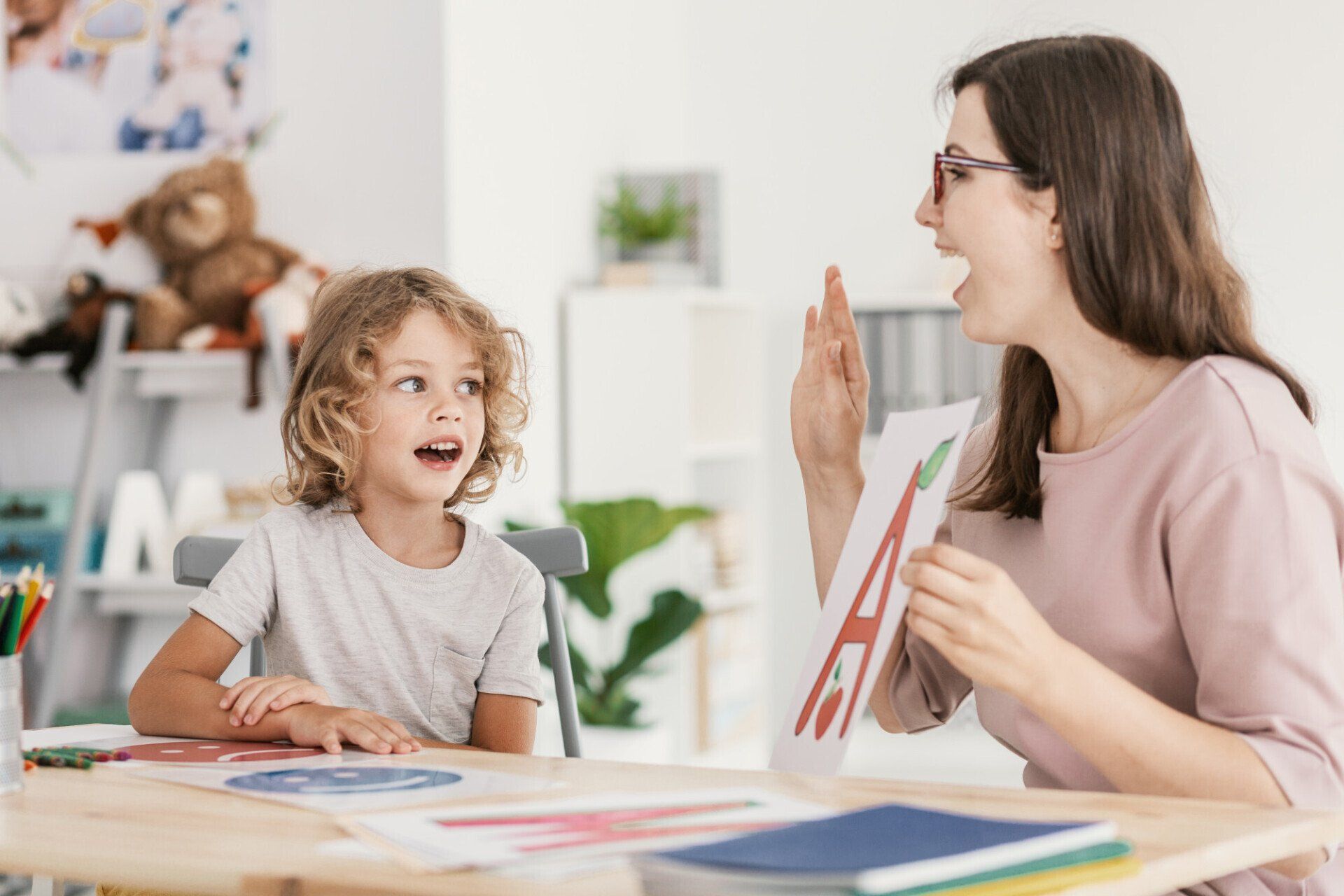
Have you determined that your child needs an individualized education plan ? Some children need extra help in the classroom, and that's okay! An IEP will help your special needs child thrive and grow. Setting IEP goals, however, can be challenging. It's hard to determine your child's specific needs when you're not with them in the classroom. You want your child to do well in school, but how can you help them? We're here to help you set practical IEP goals for your child. Keep reading for our brief guide to IEP goals. 1. Gauge Your Child's Abilities You can't start writing IEP goals without having a good idea of your starting point. Most of the time, you're going to have to work together with your child's special education instructor to figure out where your child excels and where they're going to need help. For very young children or children who struggle with significant setbacks, you may not have their help to guide you. Learn their abilities by observing them and listening to their instructors. Read all of their instructor's notes and don't be afraid to have frequent conversations with them. For children who are able to convey their own skills and needs, you should always listen . Children aren't always aware of what they need from an IEP program, but listening to their personal goals and needs is a great way to give them some level of autonomy over their education. Remember, all children are different. You can't base your IEP goals off of a condition alone. You need to take your specific child into consideration when you're planning. 2. Make All Goals Measurable All IEP goals should be measurable goals. Vague goals won't help you, your child, or your child's special education instructor. They'll just cause frustration for everyone involved. Measurable goals vary depending on how you plan on measuring them. For most children at school, these goals are going to be curriculum-based. Children who meet the goals can be tested and will succeed at those tests. At less conventional schools and programs, or for children who are young or have significant setbacks, goals can be measured through screening. Instead of standardized tests, instructors will "meet students where they are" and gauge their progress. This may mean that students go from being non-communicative to interacting with classmates, that they start developing fine motor skills, and more. These are things that aren't test-worthy but are still measurable and important. For goals to be measurable, they have to have to be time-bound and results-oriented. Your child will accomplish a specific result within a specified timeframe. 3. Keep Goals Attainable Remember that your child needs to be able to attain the goals that you set for them. You think the world of your child, but don't forget about their limitations. Unattainable goals will cause stress for you, the child's instructor, and the child themself. Start small, but not too small. Remember that each goal has a specific timeframe so you can't get too ambitious, even if you know that the child will eventually be able to achieve the goal. Remember that it's more than possible for your child to reach beyond their goal. Setting an attainable goal doesn't mean that you're setting your child up for failure or that you don't believe in them. It means that you're willing to accept and reward any amount of progress, even if it's small. 4. Monitor Progress Speaking of progress, part of setting goals is preparing to measure that progress even outside of tests. A lot of these measurements are going to happen at home. You may notice that a child isn't progressing as fast as you'd like, and this is something that you should take note of so you can bring your concerns to their teacher. 5. Stay Flexible All good goals are somewhat flexible. Remember that your child is working hard to meet their IEP goals, even if it doesn't look that way. You may have to make adjustments if your child's efforts aren't matching your ambitions for them. Again, this doesn't mean that you're failing your child or that you don't believe in them. It means that you're noticing when something isn't working and you're willing to make changes to your plans so you can better suit your child's needs. It can be hard to let go of an IEP goal that your child is struggling with, but this flexibility will help both of you in the long run. 6. Consult With a Professional As a parent, it's normal to want to handle everything on your own when it comes to your child. If you want helpful advice for IEP goals, however, it's best to consult with a professional who understands children with special needs. You can start with an education advocate. These advocates are able to connect you with helpful resources (such as therapists and educators) and they can offer advice on your IEP plan. They know how to build plans to suit any child's specific needs. After that, connect with therapists and educators so you can work together on your child's plan. The more people that are working together to help your child thrive, the more effective the plan will be. Remember that it takes a village to raise a child. Consulting with professionals and working together with people who want to help you will make things better for yourself and your child alike. It's Time to Set New IEP Goals for Your Child Setting meaningful IEP goals isn't easy, but these tips should start you off on the right track. Remember, you want measurable IEP goals that are attainable and suit your child's specific strengths and weaknesses. For help, talk to advocates, educators, and your child's therapist. When you work together, setting IEP goals is easy. If you're ready to get help, we want to meet you. Contact us for a complimentary 20-minute consultation so we can start working together to help your child today.

If your child is diagnosed with autism, you're well aware of the challenges that autistic children can face: language difficulties, attention issues, anxiety, depression, social isolation, and more. As a parent to such a child, it can be heartbreaking to witness these struggles. Undoubtedly, you're willing to try anything possible to help your child thrive . Fortunately, we have some strategies for you. Here are seven tips to help a child diagnosed with autism. 1. Prioritize Structure Autistic individuals generally struggle with spontaneity. They're often rigid in their behaviors and can have difficulty adjusting to changes. As such, as the caretaker of an autistic child, you should prioritize structure in your child's life. Set a schedule with well-defined starts and ends. Do away with outside distractions as much as possible. Do things in ways that your child is comfortable with, introducing new methods and ideas slowly over time. Flexibility doesn't tend to be an autistic individual's strong suit. Generally speaking, rigidity is ideal. This isn't to say that you should never be spontaneous; you just need to be mindful of how it will affect your child. 2. Be Visual For children who struggle in developing language, the spoken word can be difficult to understand. As such, you can't just speak to your child; you need to use additional aids to help facilitate communication. Perhaps the best way to do this is to use visuals. Pictures, videos, and hand motions can go a long way in helping an autistic child to understand new words and phrases. So, for instance, you could give your child flashcards with pictures and words on them. Go through each card and repeat the word contained, all the while pointing at the picture on the card. Over time, your child will start to understand what each word conveys. You could also build a visual schedule. In other words, create a schedule for your child, complete with pictures to help them understand each task. Videos are self-explanatory. No, you should play them all of the time. However, educational videos revolving around letters and numbers can help your child get the hang of the written language. In short, don't just talk and expect your child to pick things up. Autistic children generally require a little extra effort in this department. 3. Pursue Social Situations Social challenges are prominent in kids and students with autism. This is due to troubles with understanding nuanced and non-verbal communication. Unfortunately, this aspect of the condition can have the largest negative effect on a child, as it can leave them feeling lonely and alienated. In short, it often prevents autistic children from fitting in with their peers. Now, as the parent of an autistic child, you might have a notion to protect your child by keeping them away from social situations. However, this is the exact opposite of what you should do. Instead, you should pursue social situations on a regular basis, as doing so will help your child to pick up on nuanced manners of communication. Take your child to the playground so that they can play among other kids. Have them enrolled in a school so that they have regular contact with peers. Make them try new things on their own, but don't do too much too fast. Doing this can feel overwhelming in the short term. But with continued exposure, your child will develop these much-needed skills. The alternative is to shield your child from such exposure, in which case, your child may never develop socially. 4. Be Patient When it comes to social communication, children with autism tend to need more time in order to absorb information. As such, when talking to your autistic child, make sure to be patient. Give your child a good 5 to 10 seconds to respond before repeating what you said. If you repeat too quickly and push too much, you could overwhelm your child, making them feel self-conscious. In essence, let your child move at their own speed. Over time, they'll become better at processing verbal communication, thus allowing for smoother communication overall. 5. Be Kind Autistic children usually struggle with sensory overload. This often presents itself as misbehavior, as the child might start screaming, throwing things, or acting out in another manner. Regardless, you as the parent need to be kind. Instead of yelling and speaking in a demeaning way, stop and think logically about what your child must be going through. Practicing empathy is important, as it validates your child's feelings and helps them with their self-esteem. 6. Have Your Child Work With a Tutor Because autistic children have such different needs than neurotypical kids, they often struggle with in-class learning. This is because teachers don't always teach in ways that cater to autistic children. This is where a one-on-one tutor can be highly beneficial. By using a tutor trained to work with autistic children, you can make sure that your child is getting the instruction they need and deserve. The instruction can be tailored to your child's needs, ensuring the best outcomes possible. Regardless of where your child is on the spectrum, there is a tutor in your area that can help. Use a search engine to research "tutors for autistic children" and see what you can find. Or, if you're interested, utilize our services . Is Your Child Diagnosed With Autism? Is your child diagnosed with autism? Looking for support for autistic children? If so, you needn't look any further: we here at My Learning Ally can help. We provide a range of services to cater to an autistic child's learning needs. Whether you need education consultation, education coaching, or even an education advocate, we're the people to see. Contact us now to discuss your needs!
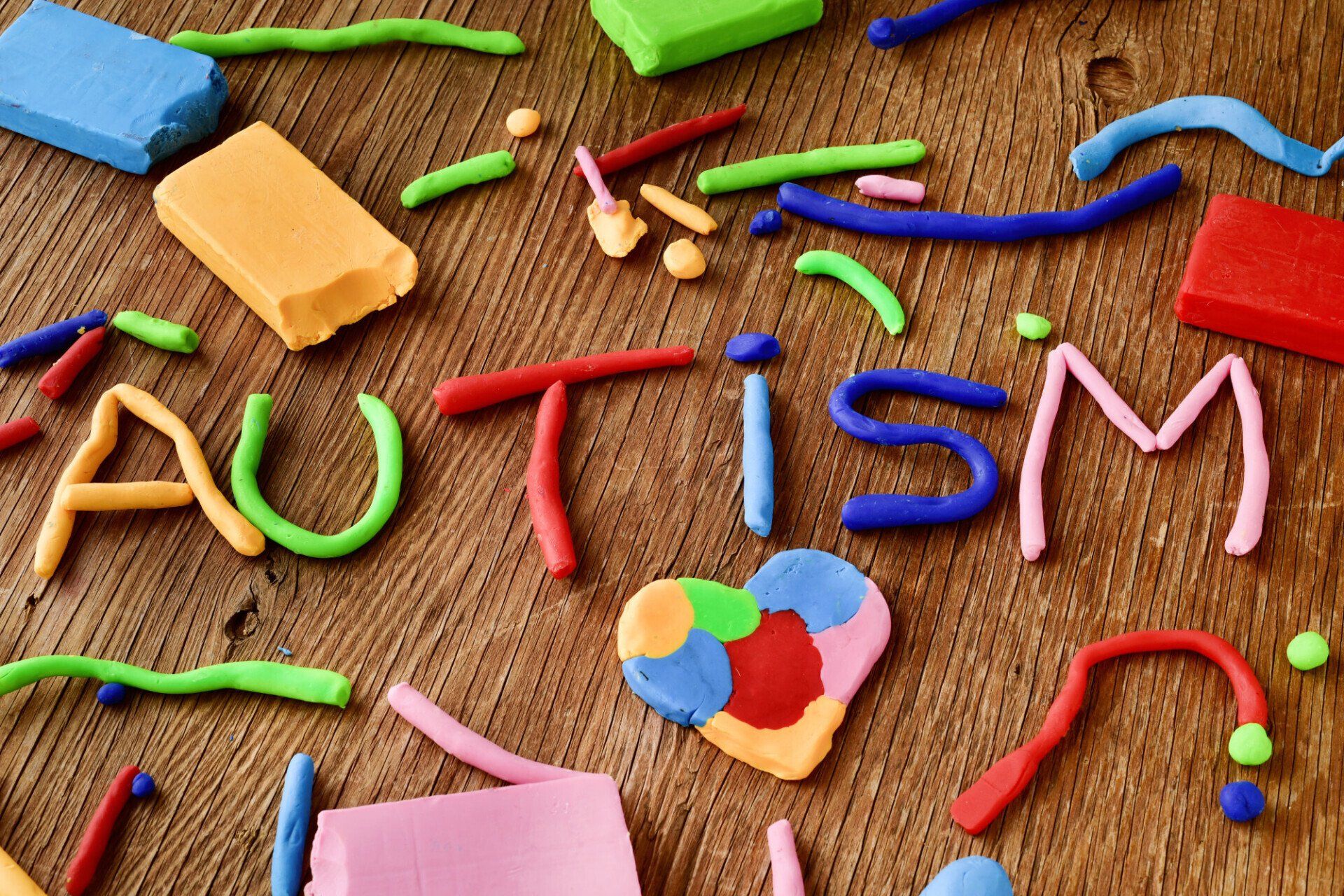
You know how frustrating it can be when your child struggles in the classroom. If you have a child with autism, it can be especially difficult to get the proper help and resources for them. The first step is identifying your child's learning style. With that knowledge, you can proceed in finding the right support to ensure their success. Making their school life easier can help encourage higher motivation for learning! Keep reading to understand the three autism learning styles and how to figure out which one your child relies on. The Three Learning Styles Most neurotypical children use multiple learning styles to acquire knowledge. Autism learning theories suggest that children with autism rely on one learning style. That's why identifying your child's education style is crucial. Many professionals believe that children with autism are visual learners . Since social skills and language development are often a struggle, children with autism may rely on visual cues. For example, a child might ignore a teacher telling them to sit but respond to a picture of a chair. Visual Learning Visual learners are the most common, making up about 65% of the population . Their brain understands and retains information better when provided visual cues. In an educational setting, visual students prefer to study the text and images in their books. They respond better to picture schedules like timetables and calendars. They might also need explicit written instructions to understand assignments and tests. Auditory Learning Approximately 30% of the population are auditory learners. Auditory cues and instructions are essential for their understanding and comprehension. These students learn through lectures, spoken instructions, and auditory media. They might prefer to listen to the teacher rather than read from their textbook. Group work is also beneficial for auditory learners because they can listen to their peers. Kinesthetic Learning The rarest learning style, kinesthetic learners make up about 5% of the population. Also called tactile learners, they prefer hands-on learning and exploring objects. In the classroom, kinesthetic learners might enjoy manipulating educational tools. To understand abstract concepts like math, they might need to play with beads and wooden bricks. Outdoor education and physical movement are usually some of their strengths. How to Tell if My Child Is a Visual Learner Observing how your child interacts with their environment can give you some clues. If your child shows high interest or strong abilities in these areas, they might be a visual learner. excellent memory understanding of maps, charts, and graphs interest in visual arts creative imagination strong interest in the environment around them love of reading and picture books The challenge with visual learners is minimizing intrusions in their environment. Since they learn through seeing, anything in their field of vision can be distracting. Educators may comment that these students can't seem to sit still and easily lose focus. How to Tell if My Child Is an Auditory Learner You can begin to spot signs of an auditory learner even in the infant stage. If your baby loves listening to you speak, musical toys, and nature sounds, you might have an auditory learner. Some other indications that your child learns through sound are: musical abilities love of singing or making up songs listens well to directions loves conversation noticing sounds others block out confident in speaking abilities A key challenge for auditory learners is a high level of background noise. Learning environments are often noisy and chaotic. Auditory learners can become distracted by classroom conversation or multiple sources of noise. How to Tell if My Child Is a Kinesthetic Learner Did your child start crawling or walking earlier than their peers? They might be a kinesthetic learner! Some other suggestions that your child learns through touch and doing are: excellent spatial awareness and balance very active difficulty keeping still/fidgeting strong abilities in sports, dance, or movement using gestures and hands when speaking, counting, etc. strong hand-eye coordination Understanding abstract concepts might be a fundamental challenge for kinesthetic learners. Conventional classrooms don't use objects to teach subjects like math, especially in post-elementary schools. Therefore, kinesthetic learners may struggle with these topics in middle and high school. Importance of the Classroom Environment Some of elementary-aged children show that the environment is especially important for students with autism. When compared to their neurotypical peers, neurodiverse students preferred the following classroom setting: bright lights warm temperature preference for a variety of learning materials some light background noise structured learning environment authoritative educator The classroom setting is important for encouraging children with different learning styles. Conventional classrooms tend to focus on auditory learners, with some visual cues involved. Others can get left behind and struggle with understanding or retention. Sometimes an IEP is the best method to help your child flourish in the classroom. An Individualized Education Plan can provide the right resources and extra help for every type of learner. They can include autism learning styles and visual teaching methods. Working With Autism Learning Styles Finding the right autism learning tools can be complicated and time-consuming. Your child might need an IEP or 504. Alternatively, they might need an education coach. Testing for an autism learning disability can also be helpful. If you're unsure of where or how to start, you need someone to advocate for you. Working with an educational advocate can make things a lot easier. They have expert knowledge of autism learning styles. Educational advocates work directly with school districts to implement individualized learning plans. They also offer support and consultation for parents struggling to help their children learn. Whether you're local to the Seattle area or prefer to work virtually, we can help you! Schedule a free consultation today to start improving your child's educational experience.
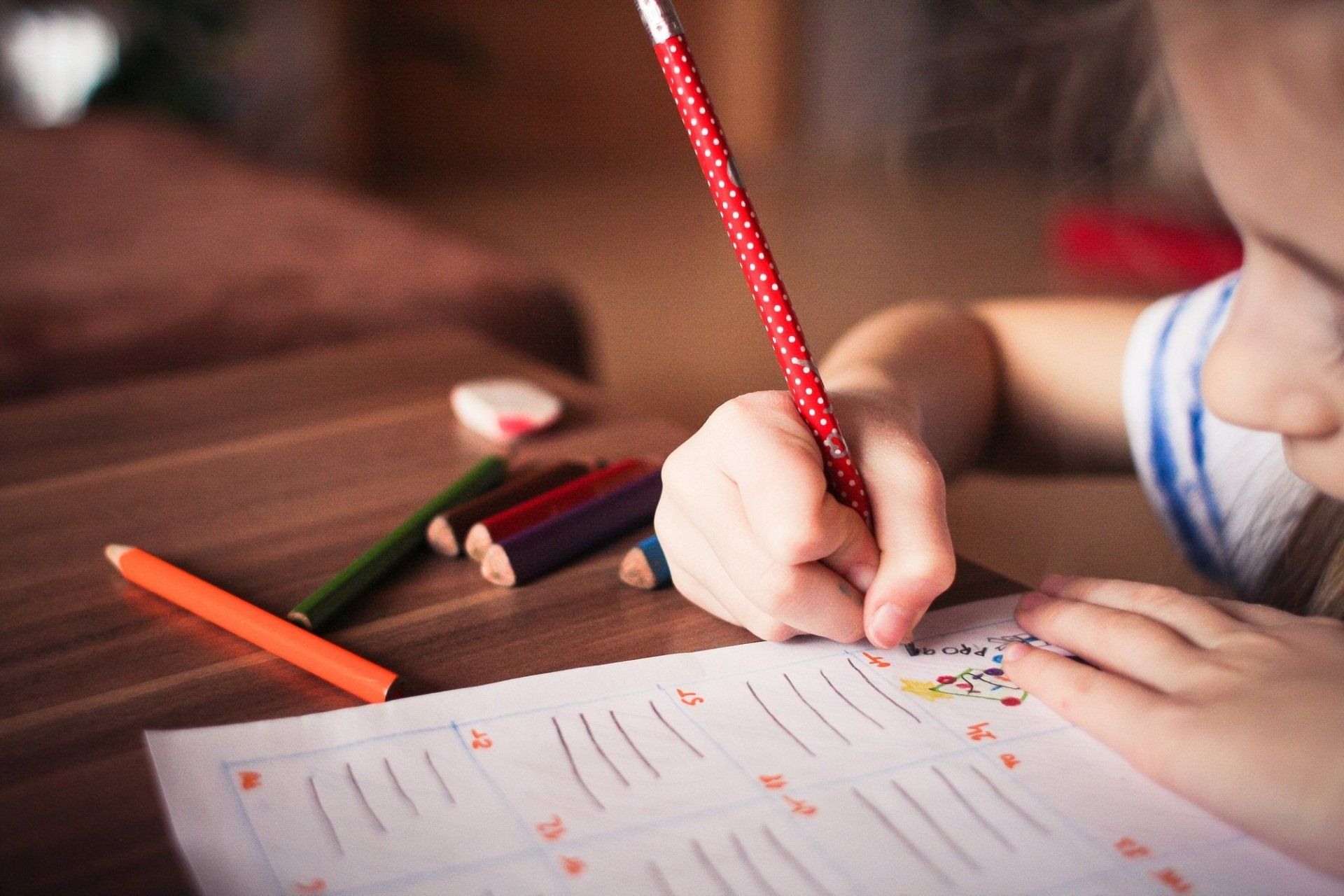
The past couple of school years have been years like none other. Overnight, everyone had to go home and figure out how to make distance learning work. Some went back to the classroom after a few months, but some spent the entire last school year learning remotely. Distance learning was difficult in many ways. Yet, it allowed many students to make custom learning environments for the first time. If your child is headed back into the classroom but would thrive from a personalized approach to their education, it may be time to look into Individualized Education Plan benefits for you and your child. If you haven't done much research yet, the ins and outs of Individuals Education Plans, or IEPs, can be quite murky. What qualifies a child for an IEP? What are the advantages and disadvantages of an IEP? Where can you find an Individualized Education Plan sample as an example of how to craft an IEP for your child. The answers to these questions could fill an entire book, but this article is here to get you started on the research journey. Keep reading to learn the eight benefits of an IEP for you and your child. 1. Provides a Clear Understanding of Your Child's Needs The first step in the IEP process is getting an evaluation for your child. This will help you and your educators understand their strengths as a learner as well as areas where they need the most support. Gaining this clarity around your child's needs will help you to understand them better and to provide the resources they actually need in order to learn at their best. It also allows you to take a data-driven approach to your child's learning and place concrete goals and action items into their learning plan. 2. Gives You and Your Child Legal Protections in Relationship to Their Education The accommodations laid out in the IEP are legally protected by the Individuals with Disabilities Education Act (IDEA). Having this written document on file allows you to advocate for your child in the classroom. It also ensures that they are receiving the support they are legally entitled to have. The process of putting an Individualized Education Plan into place also has legal support. The team must stay within the legally-specified timeline when moving a referral through the evaluation, planning, and implementation stages. You are also able to call on the services of an attorney or education advocate to assist you in this process. 3. Helps Your Child Gain Access to Necessary Support Tools Sometimes, a student doesn't need to leave the classroom in order to be able to learn. Maybe they just need some extra tools to successfully learn in the classroom with their peers. Without a formal Individualized Education Plan, it can be difficult for your child to access learning aids, such as assistive technology, fidget tools, extended times for tasks, and personalized instruction. Having an IEP written down protects their right to receive access to these tools. 4. Makes Sure Everyone Is On the Same Page A well-crafted Individualized Education Plan lays out exactly what your child needs at school, including their environmental and interpersonal support needs. Because the IEP details these things explicitly, you know that you and your child's entire education team all have the same understanding and expectations of what your child's learning environment needs to be and what your expected outcomes are. 5. Prioritizes Your Child's Learning Needs An Individualized Education Plan helps you to sort through your child's various learning needs. It also lets you identify the needs that are the highest priorities. By going through this process, you can focus in on the highest areas of support and create a plan to address those needs first. The plan lays out an explicit road map for your child's learning and empowers you and them by laying out a detailed action plan for helping them to achieve their learning goals. 6. Helps You Customize Your Child's Learning Environment to Their Needs Neurodivergent students, disabled students, and students with limited English proficiency are all examples of learners who are covered under the protections that Individualized Education Plans. These different kinds of learners all have very different support needs. Because of this, the IEP template is very broad and gives you the freedom to incorporate any modifications and accommodations that will help your child to learn at their best. 7. Provides a Framework for Assessing Your Child's Progress Putting together an Individualized Education Plan for your child requires you to specifically state what you want your child to achieve in the school year. This ensures that the goals your child is striving toward are appropriate to their needs, interests, and current learning ability. It also gives you a benchmark for assessing your child's progress year over year. 8. Makes School an Enjoyable Place to Be The ultimate goal of putting an IEP into place is that the action plan laid out in the document will help create a school environment where your child is able to learn and is excited to do so. This kind of environment fosters learning and creativity, helping your learner to thrive at school. Put These Individualized Education Plan Benefits to Work for You Now you know eight of the potential benefits of an IEP for your young learner. Use this knowledge to determine whether you want to pursue getting an IEP for your child. If you do decide that an Individualized Education Plan and its benefits are right for your child, use the information above to ensure that your child is getting everything out of their plan that they deserve. Looking for support in building an Individualized Education Plan for your child? Fill out our contact form today to schedule a free consultation with us to assess your needs and determine your next steps.

In recent years, psychologists and other experts have made groundbreaking discoveries in understanding how children learn. Their findings have altered the way classrooms interact. They've helped classrooms become more interactive and less passive, helping children to learn in deeper ways. However, these findings have also discovered many conditions that can hinder students' learning. Some of these disabilities may require special education. Other conditions, however, may require other accommodations for students. If your child has a condition like ADHD or dyslexia, you may need a 504 plan to ensure their academic success. These plans assist children with disabilities who don't qualify for special education but still need student support. If you think your child may benefit from this educational support, learn more about 504 plans today! In this guide, we'll outline what a 504 plan is and how to acquire it. So, without further ado, let's jump right in! What Is a 504 Plan? The 504 plan derives its name from Section 504 of the Rehabilitation Act of 1973 . The Rehabilitation Act guarantees that people with disabilities have certain rights, including educational support. So, schools develop 504 plans to help students customize an environment that meets their needs. These plans aim to make classrooms accessible for students, regardless of their disability. The section outlines its purpose in the following words: "No otherwise qualified individual with a disability in the United States . . . shall, solely by reason of her or his disability, be excluded from the participation in . . . or be subjected to any discrimination under any program . . . receiving federal financial assistance." Thanks to this provision, it doesn't matter what disability affects your child. Likewise, its severity is inconsequential. Whatever the case, your child can receive an individualized education plan that supports their educational needs. Typically, a 504 plan allows students to learn in the same classroom as the rest of their classmates. On some occasions, such as test days, they may have extended time for their test in a separate room. No two 504 plans are identical. Each student who qualifies for one receives a strategy tailored to their specific needs. In the next section, we'll discuss how schools determine a student's eligibility. Eligibility for Educational Support Section 504 does not include a list of disabilities that make one eligible for a plan. However, there are a few limitations. Typically, 504 plans only cover long-term disabilities, such as ADHD or dyslexia. There are exceptions to these limitations. For example, if a student is recovering from a sickness or injury, they may temporarily qualify for a 504 plan. However, the severity of a student's condition determines whether they receive a 504 plan or an IEP. We'll discuss the differences between these in a later section. For now, we'll simplify the question. A 504 plan typically goes to children with disabilities that would otherwise be able to learn at a typical level. Furthermore, a child must have a disability that meets the US Department of Education's requirements. These qualifications include: Having an impairment, whether physical or mental, that significantly limits a major life activity Having a record of this impairment Is regarded by many others as having this impairment While a student may qualify more easily for a 504 plan with a medical diagnosis, it's not required. Instead, the Department of Education leaves its criteria as broad as it possibly can. This way, each school has room to determine eligibility in individual cases. These plans cover both "major life activities" and "major bodily functions." The life activities portion applies to any function necessary to daily life. Activities include seeing and hearing, communicating, physical movement, etc. Children with issues related to major bodily functions also find protection in this clause. As such, the law protects students with biological disorders, ranging from immunodeficiencies to bowel problems. How To Determine Whether a 504 Plan or IEP is Better for Your Student As we've explained throughout this article, a 504 plan can offer accommodations for many disabilities. However, the central condition for these plans is that students must be able to learn at grade level with these conditions. In contrast, Individualized Education Programs (IEP) help students with specific diagnoses who need special education services. In this arrangement, the plan may make changes to academic instruction and expectations. While a 504 plan may make accommodations for students, such as creating a nut-free environment, they don't change the learning goals. These plans continue to hold students to the same standards as their peers. An IEP, however, is a legal document that features objectives and goals that differ from the rest of the class. In addition to those changes, IEPs include further environmental accommodations. Crafting a 504 Plan A 504 plan aims to help students attain the accommodations they need. However, there is a lengthy process attached to creating a 504 plan for students . As a parent, you must go through this process to get approval for the plan. There are exceptions to the process. Sometimes, schools notice that a student struggles in a way that indicates they have a learning disability. In those cases, a school may propose a plan to parents for their approval. However, the usual process involves parents making the first contact. You must contact your student's teacher, principal, or counselor with your concerns. From there, you can ask for your child to undergo an evaluation for a 504 plan. While a medical diagnosis is not required, it does help in getting the school's approval. You can get this diagnosis either by visiting your child's pediatrician or by getting a referral from them to a specialist. Once you get approval, the school follows its own protocols to assess your child. As they conduct tests and evaluations, they gain a clearer idea of how to help your child learn. Get Help With Your 504 Plan If you have children with disabilities, a 504 plan could prove beneficial. However, trying to get approval for this plan can become complicated. If you're not sure how to navigate this process, don't worry! We at Aliada Educational Advocacy have the tools and experience to help. So, if you need further help, contact us today! We can ensure your child gets the educational assets they need.
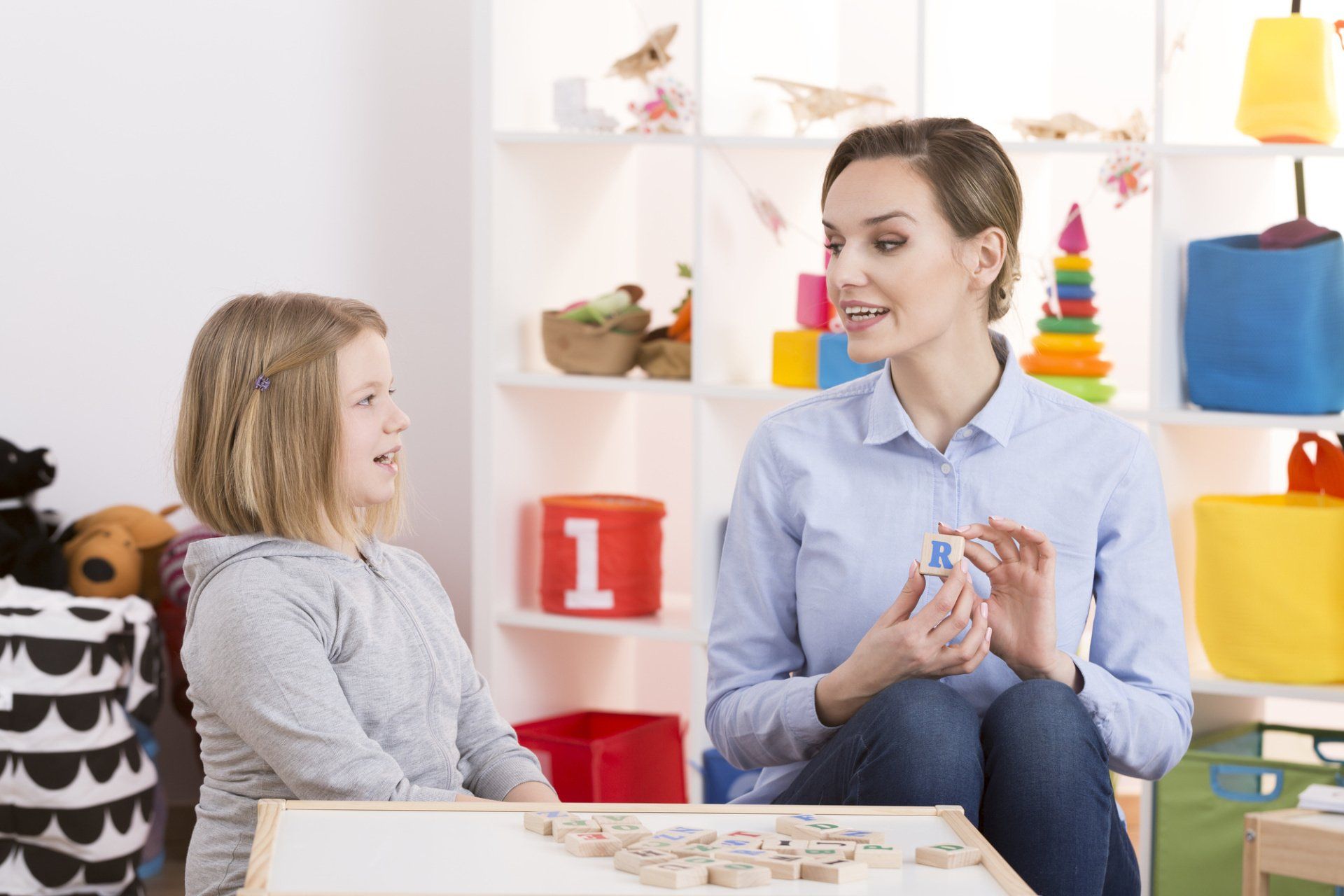
Perhaps you've noticed lately that your child is struggling to keep up with their lessons. If so, you're probably wondering what can be done to prevent them from falling behind to a detrimental degree. An estimated 14% of all public school students in America currently have an individualized education plan (or IEP). Should your child be one of them? An IEP can have immense benefits for the students that receive them. It can make the difference between a child growing to have negative feelings about school and having a positive and rewarding experience. However, it's not always easy to determine whether or not an IEP is the solution your child needs. Read on as we discuss what an IEP is, how it can help, and what makes a student eligible to receive one. What Is an Individualized Education Plan? Individualized education plans fall under the umbrella of the 2004 update to the Individuals with Disabilities Education Act (IDEA). At its core, an IEP is a document that outlines the specific needs and goals of students with disabilities. The establishment of the IEP gave parents and primary caregivers more say in their child's education. In order to put together an IEP, parents and caregivers work closely with their child's educators. The objective is to ensure that students are able to continue their education in the public school environment by providing them with appropriate accommodations. One of the IEP benefits is that it can often be implemented in the standard environment offered by your child's school. For example, students may work with the assistance of an aid or attend class in a special education resource room. Some students with an IEP may thrive best in a separate school environment, however. Which Students Can Benefit from an IEP? There are 13 specific disability categories that are legally recognized under the IDEA. Children who have one or several of these disabilities may qualify for an IEP. These disabilities include but are not limited to SLDs such as dyslexia, autism spectrum disorder, visual or hearing impairment, and orthopedic impairment. Disabilities that resulted from accidents, such as traumatic brain injuries, may also qualify your child for an IEP. It's important to note that simply having one of these disabilities may not qualify a child for an IEP. It must be demonstrated that their disability directly impacts their ability to learn under the standard curriculum. How Do You Request an IEP for Your Child? The process of requesting an IEP begins with a referral. This referral may come from a parent, teacher, or doctor who is concerned about a child's development and learning. The concerned party can get the ball rolling by getting in touch with the school counselor or psychologist. The next step often involves a conference with the parent, child, or both. The school's counselor or psychologist may wish to observe your child in their classroom setting. They may also want to conduct an initial evaluation of your child's performance in school. If the counselor or psychologist agrees that an IEP may be useful, the IEP evaluation process can begin. What to Expect from the IEP Evaluation Process During the evaluation phase, the school will put together a multidisciplinary team. This team can include professionals such as speech or occupational therapists. It can also include special educators and other relevant specialists. The goal is to take a closer look at your child's performance in school. The evaluation team may observe your child's behavior in class, their academic performance, and their ability to get through daily tasks. They may also ask your child to perform a series of tests. As a parent or caregiver, you can say no to the evaluation process. How Are IEPs Developed? The typical process of developing an IEP involves the student's evaluation team, the parents, and the teacher. Together, you can establish both short and long-term goals to help your child meet their educational needs. An IEP outlines any support services your child will need to meet these goals. For example, this could include regular speech therapy or counseling. It could also include specific transportation needs. If your child needs a large number of services, the IEP will include how to best administer them. The goal is to avoid disrupting your child's school day as much as possible. An IEP is an evolving document. Each year, you will undergo the IEP development process again. This ensures that as your child progresses and changes, the IEP adapts accordingly. Signs That Your Child May Need an IEP As we mentioned earlier, having a disability doesn't necessarily qualify your child for an IEP. So, how can you determine if an IEP is the right choice? If your child's teacher has expressed concern, talk to them about it. If they've tried different strategies to help your child and the strategies aren't quite working, it may be time for an IEP. Another sign may arise when a problem isn't new but isn't improving. When you've ruled out other possibilities (such as lack of interest or motivation), it may be time to see if your child could benefit from additional accommodations. We offer our services to all families who need educational advocacy. One of our services is support and consultation, where we create space to discuss your child's specific circumstances. If you're not sure if an IEP is the right call, we're here to help. Contact Us for Further Assistance An individualized education plan can make all the difference for thousands of students in America. If you believe that your child could benefit from an IEP, don't hesitate to reach out to your school district. Do you have additional questions about IEPs? Do you want to schedule a consultation to learn more about your options? Contact us today and we'll help you find the best solutions for your children.

Raising children can be difficult at many stages of their lives. You can have a hyperactive toddler, an emotional preteen, or a spiteful teenager. Each stage of childhood development comes with its challenges. When kids exhibit behavioral issues, it might be tempting to react or verbally lash out at your child. However, telling your kids that they "are bad" can have damaging psychological effects . Kids internalize this message and it can lead to mental health issues. If your child is acting out, you might want to consider a behavior plan. This is a way to deal with your child's behavior issues and take steps towards improvement. Keep reading to learn more about a behavior intervention plan and how it can be beneficial for your child. What Is a Behavioral Intervention Plan? A behavioral intervention plan or a BIP is a plan that is created for a child who displays behavioral issues in the classroom. The goal of this plan is to praise and reward good behavior while deterring negative behavior patterns. It analyzes the problematic behaviors, uncovers the source of misbehavior, and creates a strategy for positive behavior. The plan involves the teachers, students, parents, and behavioral specialists. This ensures that everyone is clear about the expectations are and what the steps of the plan are. Those involved in rearing the child's behavior must stay consistent across the board. It is also common to make changes to the plan for best results. Who Should Get a Behavior Plan? Children of all ages are prone to misbehaving in the classroom. This does not mean that they need a plan. A behavior support plan is for those with severe behavioral issues that repeat over time and are disruptive in the learning environment. It is for those children whose education is being hindered because of problematic behaviors. Here are some of the behaviors that may warrant a behavior plan: The student is unresponsive to the teacher The student throws tantrums The student leaves supervision without permission The student consistently bullies other students The student verbally threatens other students or the teacher The student is physically abusive towards the teacher or other students These are some of the behaviors that can lead to a behavioral intervention plan. These behaviors disrupt the learning process and create an uncomfortable classroom setting. How a Behavior Plan Can Be Beneficial A behavior plan for students can have a positive impact on the entire classroom environment. It makes it easier for the teacher to teach and creates a conducive learning environment for other students. Most importantly, it helps to prevent problem behaviors, rather than react to them. It gives the student rules and responsibility. Here are some of the benefits of a positive behavior support plan: It is proactive rather than reactive It promotes responsibility It creates predictable behavior patterns It helps strengthen the student-teacher relationship This plan is used every day in the classroom environment. It is also used by parents and caregivers to ensure that the behavior reinforcement is implemented by all authorities in the child's life. How to Make a Behavior Plan Making a behavior plan takes several steps and a strong support system of caregivers. With the right plan, the student will be able to exhibit the desired behavior and become more empowered. Observe and Collect Perceptions of Problematic Behavior Before implementing a plan, it is necessary to observe and understand what are the problematic behaviors. You can start by observing the behavior, collecting the information, and reflecting on the implications of the behavior. When you are making your observation, ask yourself the following questions: Why do I think this behavior is problematic? Why do I believe that this behavior is a hindrance to learning? Why do I think the child is displaying this type of behavior? How do other parents or teachers perceive this behavior? This step is a way to start analyzing the behavior. Whether you are a parent or teacher, you will want the right team of educational and behavioral specialists to begin making an action plan. Consider the Source of Behaviour Issues There are many reasons that children act out at school and home. Children going through difficulties at home are prone to acting out. If they've lost a family member, if they've recently moved, or if their parents are separating. All of these can cause emotional distress. Some children going through these lifestyle changes are unable to manage their emotions. They cannot communicate what is upsetting them and so they are more likely to act out. Low self-esteem and parental neglect can also lead to behavioral issues. Involve the Child Involving a child in their behavioral plan can be empowering in many ways. It also takes into consideration that each child is different and they will need a different type of action plan. Getting a child involved in their plan by asking what they think about their behavior. It helps to give the child a voice and consider their perspective. This will help you tailor a plan to their specific needs and ensure that they understand what is expected of them. Create a List of Rules For all students, there are classroom rules that everyone abides by. You can talk to your classroom to ensure that everyone understands the rules. This acts as a classroom behavior plan that ensures that one student doesn't feel like they're singled out. It is effective to have the class get involved in making the rules. Ask your students what they think is the best way to make their learning experience the most productive. Have the class be involved in making a shortlist of rules that every student will adhere to. Explain the Consequences All rules should have consequences if they are broken. This is one of the most important steps when designing a behavior management plan. If there are no consequences to problematic behavior, the child has no reason to follow the rules. Ensure that the consequences are understood by everyone that is involved in the behavior plan. The consequences must also be tailored to the rule that is broken. The consequence for not finishing homework will be different than the consequence for disrupting the classroom. Likewise, you can create a reward and praise system for exhibiting positive behaviors. These are positive consequences of positive behaviors. Recognizing the child's efforts also helps to increase their motivation and boost their self-esteem. Getting Back on Track with a Behavior Plan Dealing with problematic behavior can be overwhelming for both teachers and students. Creating a comprehensive behavior plan can help a child to get back on track at school and at home. With the right steps and a supportive team, your child can become more positive in the classroom and take responsibility for their behavior in a healthy way. If you are interested in educational and behavioral services, book a free consultation with Aliada Educational Advocacy today!


